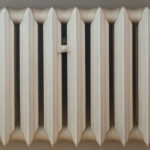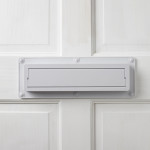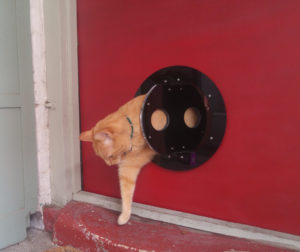Airtightness
Airtightness is key to concepts of draughtproofing. If air can’t get past a barrier then by definition that barrier is airtight. This is great for keeping biscuits fresh, and for keeping your home comfortable. It can be a relative term though and something that’s difficult to measure, so here we look a little closer.
Passivhaus
The Passivhaus standard is an energy performance standard which the Passivhaus Institut (sic) defines like this:
“A Passivhaus is a building, for which thermal comfort can be achieved solely by post-heating or post-cooling of the fresh air mass, which is required to achieve sufficient indoor air quality conditions – without the need for additional recirculation of air.”
Trying not to get too technical, this usually means that extra heating is unnecessary most of the time.

You won’t need heating very often in a Passivhaus
Passivhaus standard is achieved by fitting specialised measures, including doors, windows and MHRV systems. These units must be fitted with great care otherwise they can leak air. Leaky windows and doors cause most draughts in ordinary homes, and would wreak havoc in a passivhaus.
A passivhaus remains at a fairly even temperature, comfortable on warm and chilly days, with little input. That said, of course passivhaus owners open windows sometimes. A common passivhaus myth is that residents are sealed inside with stale air. Passivhaus is about controlling air exchange rather than being at its mercy. If you have a rattly old letterbox or cat flap then you don’t have control over airtightness.
EnerPHit
EnerPHIT is a slightly less stringent airtightness measure. It applies to retrofitting an older house to a vastly improved standard of airtightness. It’s almost impossible to raise an old house to Passivhaus levels of airtightness, but EnerPHit still demands high standards. Homebuilding and Renovating quotes this:
The EnerPHit standard includes the following requirements: Annual specific space heating demand of 25kWh/m² (as compared to 15kWh/m² for full PassivHaus); airtightness ideally to PassivHaus levels (0.6ach) but will allow 1.0ach; windows need to be PassivHaus certified, with triple-glazed panes; and calculations to demonstrate moisture is adequately managed.
Draughtproofing

Our Ecoflap letter box draught excluder
Most UK housing doesn’t aspire to either of these standards. Much UK housing stock is expensive to heat as there are so many gaps in the fabric of the building. The warm air leaks out, the temperature drops and more energy is needed to power the heating.
Draughts get in round badly-fitting windows and doors, and through poorly insulated floors and rooves. We also invite draughts into our houses through letterboxes and catflaps, but there’s a solution to that. Our products work by always presenting a slightly larger surface area to any draught. This means the draught pushes the flap more firmly against its frame, increasing airtightness. It also stops rattling and prevents rain getting through. Both the Ecoflap and the Petflap have a gentle but reliable closing action. This means no tails trapped in the Petflap or fingers pinched by the Ecoflap.
Radiator photo credit: http://www.freeimages.com/photographer/dariuszman-61341






